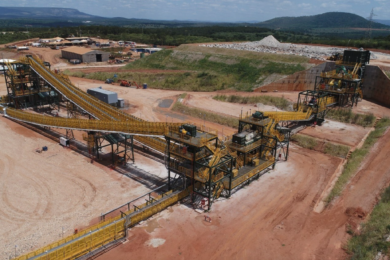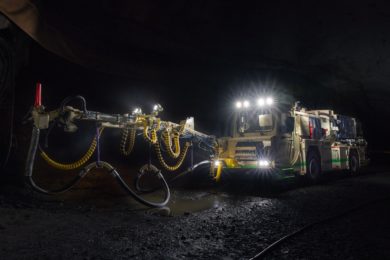 Allied Nevada Gold has reported that it has completed the second phase of its ongoing metallurgical test program for onsite oxidation and processing of sulphide concentrates at the Hycroft mine. The encouraging results from the first and second phases of testing, including preliminary capital and operating cost evaluations, have led the mine to initiate a pilot plant level study at a third party laboratory. The second phase test program focused on further evaluation and optimisation of Ambient Pressure Alkaline Oxidation (AAO) on Hycroft rougher concentrate.
Allied Nevada Gold has reported that it has completed the second phase of its ongoing metallurgical test program for onsite oxidation and processing of sulphide concentrates at the Hycroft mine. The encouraging results from the first and second phases of testing, including preliminary capital and operating cost evaluations, have led the mine to initiate a pilot plant level study at a third party laboratory. The second phase test program focused on further evaluation and optimisation of Ambient Pressure Alkaline Oxidation (AAO) on Hycroft rougher concentrate.
The goals of this second phase were to confirm first phase test work results; establish operating parameters; and provide an initial capital and operating cost model. Bench scale testing of AAO indicated that oxidation and leaching of rougher concentrate, using trona (a mixture of sodium carbonate and sodium bicarbonate) as the pH modifier, resulted in similar recoveries that had been achieved during the first phase. The company has initiated the pilot plant study at a third party laboratory which will include constructing a pilot plant to simulate the process flow sheet in a continuous circuit including grinding and flotation, to create a rougher concentrate, oxidation and leaching. The goal of this stage is to firm up operating parameters, establish equipment requirements and further refine operating and capital requirements for the oxidation plant. The pilot plant is expected to be completed by the end of the first quarter of 2014. M3 Engineering & Technology (M3) will use the results of the oxidation test work, capital and operating cost review and pilot plant program to develop an updated prefeasibility study.
Ambient pressure oxidation is a common pretreatment method for oxidising certain refractory ores, prior to the cyanide leaching step, and has been used successfully for a number of years in the precious metals industry. There are various manifestations of the process, including the Albion process and AAO, which have been or are currently in operation globally. AAO, as it is intended to be applied in the concentrate oxidation process for Hycroft, involves using oxygen-enriched air and heat generated from the oxidation process to oxidise the concentrate in an ambient pressure environment using trona to provide the alkaline environment and to neutralise the acid that is created during the oxidation process.
Other neutralising agents were tested, all showing positive results. Trona was selected because it is a relatively inexpensive neutralising agent and enhances sulphide oxidation. The carbonate in the trona solution keeps the sulphide surfaces clean during oxidation, improving the oxidation rate compared to other neutralising agents and has the added benefit of being the most cost-effective option due to its availability and proximity to Hycroft. The largest known trona source in the world is situated in Green River, Wyoming, with readily accessible transportation lines to Hycroft. For the Hycroft concentrate, testing has shown that AAO using trona and either oxygen or oxygen-enriched air provides the necessary sulphide oxidation to achieve the desired gold recovery. Oxygen (or oxygen-enriched air) is a less expensive oxidant than either chlorine or hydrogen peroxide that has been used elsewhere in other AAO circuits.
The AAO process, in many forms, has been used commercially worldwide. East Driefontein in South Africa used AAO to oxidise minor amounts of pyrrhotite before cyanidation to reduce cyanide consumption. Lime was used to control the pH at 10.5-11, as they were interested in passivating the sulphide surfaces, not oxidising a large fraction of the sulphide minerals in the ore. The Homestake Mine in South Dakota also used an alkaline pretreatment to passivate and oxidise sulphides. Similarly, Joutel in Quebec used lime and oxygen-enriched air on flotation concentrates. Jerritt Canyon in Nevada used chlorine as the oxidant under alkaline conditions for 16 years. In this operation, sodium carbonate was used to control pH. Pine Creek in Australia also oxidised reactive sulphides at alkaline conditions, using hydrogen peroxide as the oxidant.









